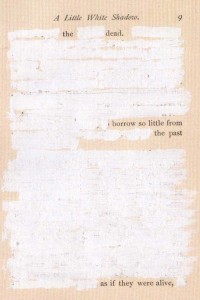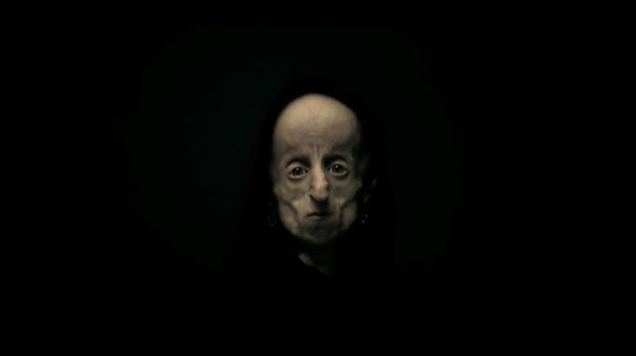Matthew Simmons
Matthew Simmons lives in Seattle.
Matthew Simmons lives in Seattle.
httpv://www.youtube.com/watch?v=Ch6Jtk6oJRo
Sometimes writing can knock a whole lot of angry into you. Ever really, really freak out? What happened?
Some borrowing:
httpv://www.youtube.com/watch?v=SnFcoE_YtNA
(I really love the “here’s one of my old 45s on a record player” genre of Youtube videos.)
More and so much more. READ MORE >
Rebecca Brown on failure: “Because failing as an artist is a necessary thing, a thing I wish I could more easily accept.”

Turns out, Michael Jackson really did have vitiligo. All this time, I’ve assumed—like so many others—that he was bleaching out his skin to look whiter. (Which belief now has me questioning myself pretty seriously. So I’m under the impression one of the richest black entertainers in the world was, when given the resources to fulfill his deepest yearnings, at the very core of his being he found that he wanted most of all to look like me? How’s that for arrogance.)
Anyway, as a kind of tribute to the guy, let’s subject some of our writing to a little vitiligo, shall we? Much like Mary Ruefle (oh, God. Mary Ruefle!) did with her book A Little White Shadow, take a printed page (or two, or three, or 60) and go at it with the white out. But use your own writing—not the writing of some other person. Infect your own work with vitiligo as a way of apologizing for never believing that Michael Jackson had vitiligo.
Remember: vitiligo spreads from a single point. It grow. Start at a single word and move around to surrounding words. Be deliberate, though, so some kind of meaning remains. (Note that I say some kind of meaning. Feel free to define that however you want. Feel free to consult this Poetry Foundation article by Ross Simonini.)
For ADVANCED students: spread your white spots without paying to what you are vanishing. Just make stuff go away. And then, as Michael Jackson did, go right ahead and perform some plastic surgery on what’s left over in order to find a new story in the wreckage of the old. Shaves some letters off the words. Add some letters to the words. Pull some letters from one word and give them to another. Make up some words and add them to the piece of writing. Take some words from the dictionary and add them to the piece in a place that makes the piece look nice. (That is, use the skeleton of the old work to write something new. Maybe keep the skeleton in place, though. You don’t want the body to fall into a heap.)
(Right?)
“He died in a monstrous blooming rose of blood and fire outside of Munsan-ni, under a mortar attack. A week earlier, Chinese rounds had tracked a squad across a valley floor with relentless, elegant, fussy precision, killing two and wounding two.” An excerpt from Gilbert Sorrentino’s posthumous novel The Abyss of Human Illusion at The Brooklyn Rail.

Hidden behind the buzz around this wonderfully strange—and slickly produced—band called Die Antwoord is the inclusion in this video:
httpv://www.youtube.com/watch?v=wc3f4xU_FfQ
of an artist named Leon Botha. Botha is one of the oldest living persons in the world with a condition called Progeria. He’s 24 but he appears to be in his 80s.
The two vocalists in Die Antwoord have done some work to make themselves as visually arresting as their costar—the severe and unflattering haircuts, the poor needle and ink tattoos on the man, the peroxide on the hair and eyebrows of the woman—but they can only achieve so much. Botha steals the attention of the viewer. And what I like most about this is that I think Botha wants that. He wants to be seen. But how many will notice him behind the catchy music, funny haircuts, and—interesting, I’ll admit—artifice of Die Antwoord? Some attention to him is paid after the cut.
READ MORE >
 Ryan Boudinot has a new project. It’s called Found and Lost, and it’s stories distributed to readers through geocaches. Here’s a description of the stories:
Ryan Boudinot has a new project. It’s called Found and Lost, and it’s stories distributed to readers through geocaches. Here’s a description of the stories:
“Found and Lost” is a series of interlinked short stories. Each story focuses on a main character who, in the course of the story, finds something and loses something else. The stories are set in various settings and time periods. The stories are connected to one another like links in a chain. For instance, Betty finds a cell phone and loses a framed butterfly. In another story, Juan finds the framed butterfly and loses his wallet. In another story, a man finds Juan’s wallet and loses his glass eye. The stories are linked in a circle, so that the “last” story involves someone who loses something that the “first” person finds.
Ryan has always approached technology in interesting ways—both in his writing and in the way he gets his writing to people. I like this idea a lot. I’m in favor of people giving work away, but I like that Ryan has made a challenge out of it.
Do any of you do this? This geocaching thing? Would you work for a good story? Would you search for one, given the chance?